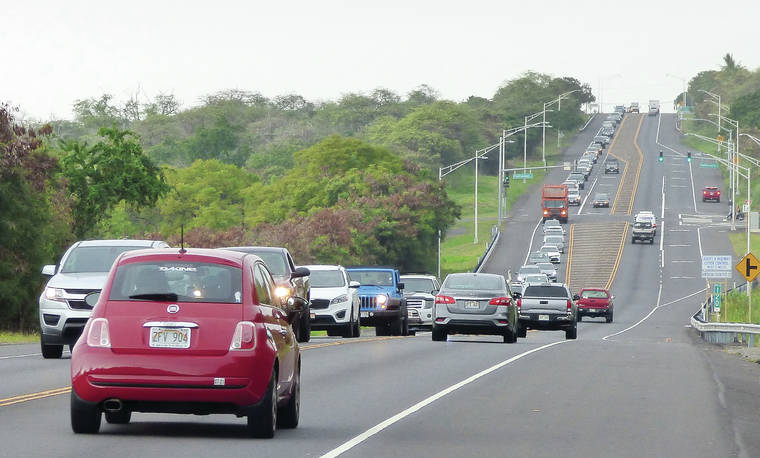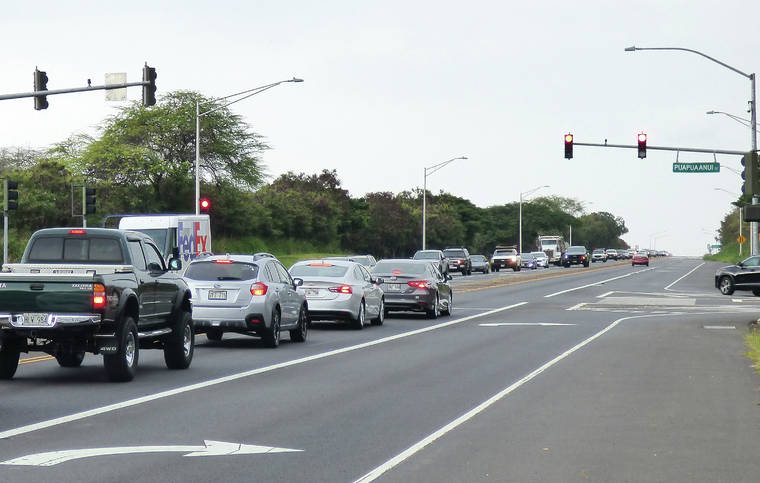An agreement worked out by two council members negotiating with developers of a Kailua-Kona project was approved by the County Council last week and then sent to the mayor, despite three council members’ assurances that the public would have one more opportunity to comment at a council forum.
Bills 200 and 201 allow revisions to 11 conditions of approval on a 2005 rezoning. The 30-acre property is located makai of Queen Kaahumanu Highway and Pualani Estates Subdivision.
Developers Puaa Development LLC and Suffolk Investment LLC sought to change the rezoning ordinance to create a smaller commercial center than originally envisioned, downsizing it from 93,600 to 72,600 square feet, while also adding a transit hub and 100 multifamily housing units.
Kona Councilwoman Rebecca Villegas and Puna Councilwoman Ashley Kierkiewicz said they met with developers, current and prospective owners, county Planning Department officials, a member of the Leeward Planning Commission and members of the community.
A Nov. 6 community meeting with developers seemed to allay neighbors’ concerns, as no one testified on the bill when it came up for its final reading Dec. 23.
The discussions occurred after the Planning Department and Planning Commission gave the project negative recommendations.
“As we’ve navigated this process for the last couple of months, what’s become apparent is the good will and the commitment to move things forward,” Villegas said. “Unfortunately, these concessions weren’t made prior with the Planning Department at the time, or with the Planning Commission, but as we navigated the process posthaste we were able to get all of those concessions and put them back into these two bills.”
Council Chairwoman Maile David, Kohala Councilman Tim Richards and Hilo Councilwoman Sue Lee Loy assured the public there would be another chance to testify, as council rules required bills that are substantially changed on their last reading be held over for another reading. But a move by Villegas to suspend the rules, approved unanimously, allowed the council to finish the vote without having to bring it back.
“We want to be sensitive; we don’t want to create more obstruction in government,” said Richards about his objections to sending it back to the Leeward Planning Commission, as sometimes occurs with bills that change significantly after its recommendation. “We want to keep the process moving forward.”
The bills passed 8-1, with North Kona Councilman Holeka Inaba the sole no vote. Inaba said he’d like the Leeward Planning Commission to take another look at it before a final vote.
“With all the work that’s been put in and I know it’s kind of reverted back to what it seems to have been before,” Inaba said, “but I think it does do us good to have experts who were appointed for this position to review a clean version.”
Kierkiewicz said that additional step wasn’t necessary.
“The mandate of this council is to legislate. We make the laws,” she said. “We take the recommendations of the director and the department and the planning commission into consideration, but we have the final word.”
The 14-page amendment requires an updated traffic impact analysis or traffic assessment that takes into account the project’s impact on Puapua‘anui Street and all signalized intersections within a mile of that intersection. It also requires developers to subdivide and submit for dedication five acres for park or other public use, with the value to be credited to the developer’s fair share fee.
The amendment extends the deadline for a required water commitment deposit from 90 days to 180 days from the effective date of the ordinance and extends the deadline for completion of construction from five to 10 years.
The state Sunshine Law allows two council members to meet and discuss council business without public notice or open meetings, provided no commitments to vote one way or the other are made. Whether two council members can meet outside a public meeting to craft amendments is a question that hasn’t been addressed by the state Office of Information Practices or the courts, an OIP attorney told West Hawaii Today.


